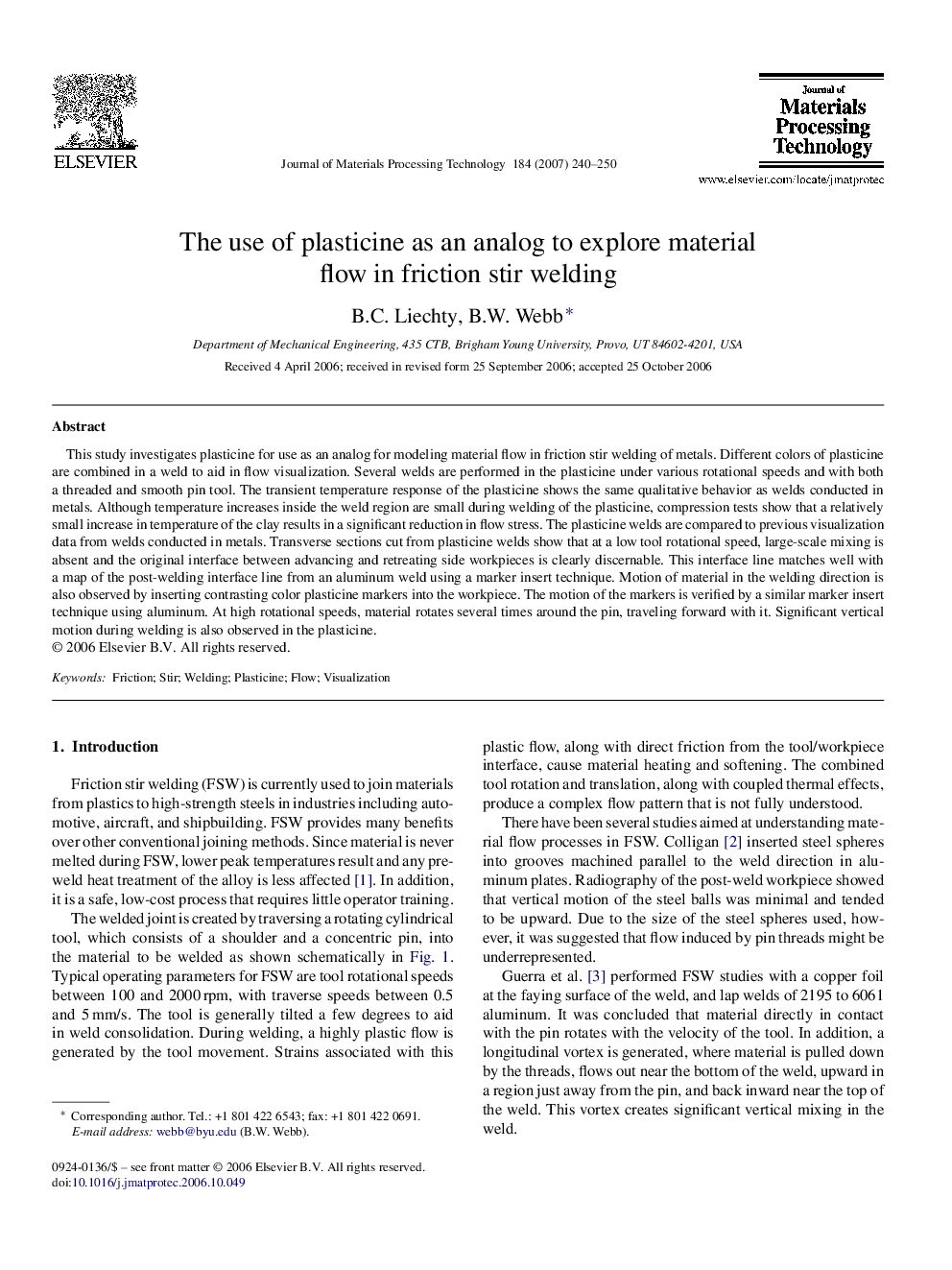| Article ID | Journal | Published Year | Pages | File Type |
|---|---|---|---|---|
| 798846 | Journal of Materials Processing Technology | 2007 | 11 Pages |
This study investigates plasticine for use as an analog for modeling material flow in friction stir welding of metals. Different colors of plasticine are combined in a weld to aid in flow visualization. Several welds are performed in the plasticine under various rotational speeds and with both a threaded and smooth pin tool. The transient temperature response of the plasticine shows the same qualitative behavior as welds conducted in metals. Although temperature increases inside the weld region are small during welding of the plasticine, compression tests show that a relatively small increase in temperature of the clay results in a significant reduction in flow stress. The plasticine welds are compared to previous visualization data from welds conducted in metals. Transverse sections cut from plasticine welds show that at a low tool rotational speed, large-scale mixing is absent and the original interface between advancing and retreating side workpieces is clearly discernable. This interface line matches well with a map of the post-welding interface line from an aluminum weld using a marker insert technique. Motion of material in the welding direction is also observed by inserting contrasting color plasticine markers into the workpiece. The motion of the markers is verified by a similar marker insert technique using aluminum. At high rotational speeds, material rotates several times around the pin, traveling forward with it. Significant vertical motion during welding is also observed in the plasticine.
